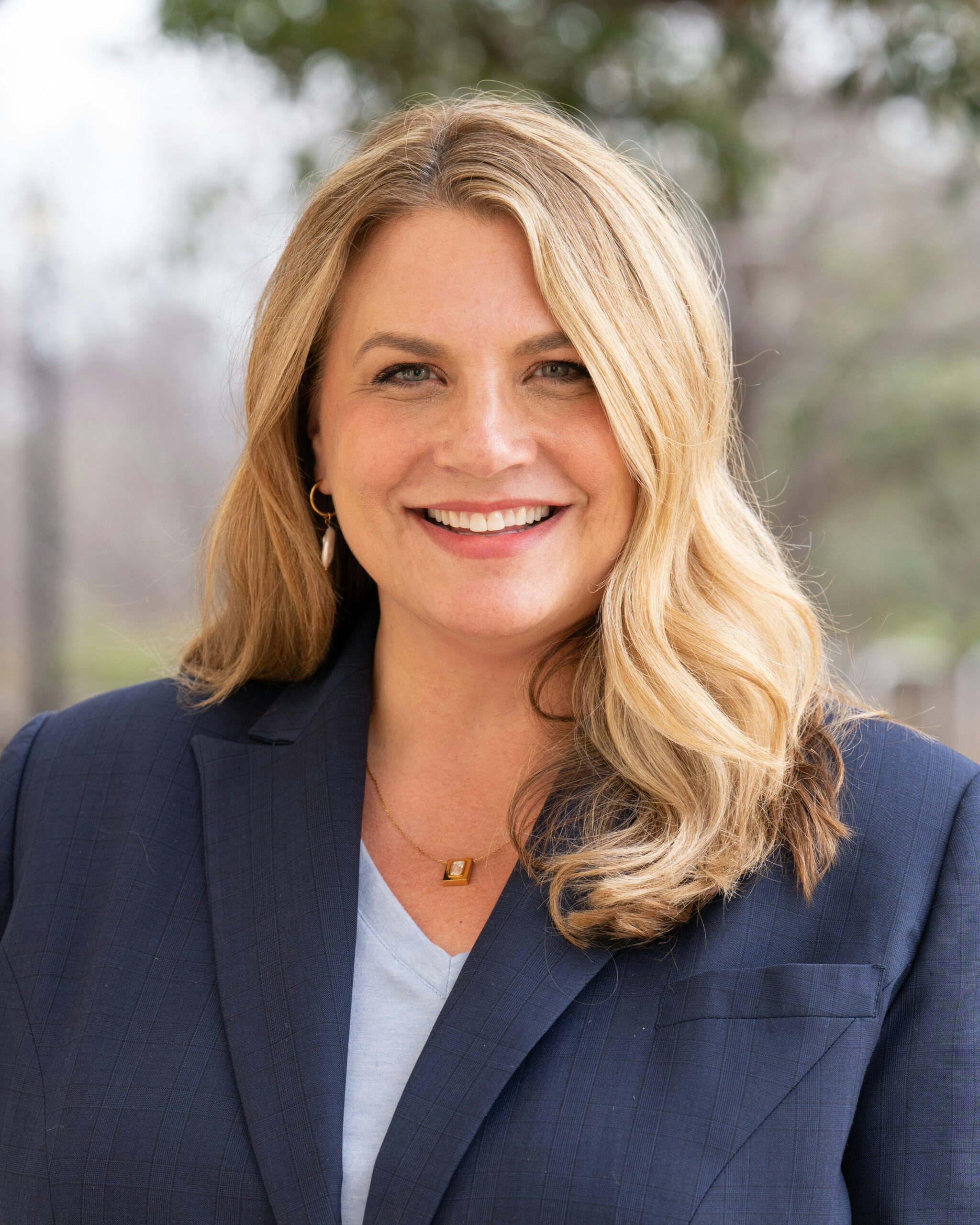Nevada Superintendent of Public Instruction Steve Canavero shares a state leader’s perspective on accountability.
For the last three years, Steve Canavero has been Nevada’s superintendent of public instruction. Before overseeing the state’s nearly 450,000 students, Canavero, who holds a Ph.D. in education leadership, served as deputy of student achievement at the Nevada Department of Education. He also served as the first director of Nevada’s State Public Charter School Authority, which led to the state’s charter school policy being nationally acclaimed.
Canavero spoke with Anne Wicks, director of education reform at the George W. Bush Institute, about the difference between “Big-A accountability” and “Little-A accountability.” The former involves tests and consequences, he observes, while the latter involves the daily work of being responsible for student outcomes. His goal is to connect the two through regular conversations about expectations and a proven theory of action. The work of improving accountability systems is never done, Canavero believes. But he emphasizes it must continue and involve honest partnerships and honest conversations among adults for the benefit of students.
How do you define accountability? And how has that definition changed for you over time?
I don’t see accountability as a single thing, but it is grounded in clear outcomes and expectations. They are the cornerstones of accountability. And accountability includes conversations about progress towards those clear expectations in a formative and summative way.
Over time, my view has changed. The big idea of being accountable for changing the lives and learning conditions for kids hasn’t changed, but I have recognized a more nuanced approach to accountability.
I’d simplify it by describing accountability as “Big A” and “Little A.” Big A is what we tend to believe in the education space. Big A involves summative consequences and judgments and Little A is sometimes called performance management. Little A involves adults being accountable for improving conditions for kids and working collectively to be accountable for that outcome.
I’d simplify it by describing accountability as ‘Big A’ and ‘Little A.’ Big A is what we tend to believe in the education space. Big A involves summative consequences and judgments and Little A is sometimes called performance management. Little A involves adults being accountable for improving conditions for kids and working collectively to be accountable for that outcome.
Why do you think there’s been a split between Big-A accountability, which is sometimes a political hot potato, and Little-A accountability, which is more about the work that’s getting done every day?
The pendulum swung very quickly during the No Child Left Behind era, when accountability with a Big A was introduced. Over time, we have become more comfortable being held accountable collectively for outcomes for kids.
That has helped us create a bridge between an annual summative event to multiple conversations throughout the year that are anchored around expectations and centered on a theory of action that we believe to be true. That enables us to have Little-A accountability conversations that support the high-level accountability about general school performance or subgroup performance.
Is there a more commonly-held understanding of Little-A accountability in Nevada now? Or does that work need to continue?
I’m a firm believer that the work is never done, so we need to continue to do this work. We need to continue to forge honest partnerships and have honest conversations around Little-A accountability, about adults and systems being accountable to each other for the benefit of kids.
We need to continue to forge honest partnerships and have honest conversations around Little-A accountability, about adults and systems being accountable to each other for the benefit of kids.
So how does your work in Nevada reflect that “Little A” drive towards successful student outcomes?
The distribution of ownership is critical. Within the Legislature and the Clark County School District, which is now the nation’s fifth largest district, there is a clear effort to flip the design of the district to be school-centered and to give those individuals closest to the challenge the authority to solve their challenges. This is a case where I have specific authority within law to hold people Big-A accountable.
I try to balance the high-level accountability with the day-to-day, week-to-week, month-to-month accountability by being a persistent partner. I may be the person in charge of accountability, but I’m also accountable to the citizens of the state and the Legislature. By being a persistent partner, I’m able to forge relationships towards these outcomes, build trust, and have honest conversations about the barriers. That way, we can achieve the outcome that we all want.
These specific conversations drive towards the expectations and hold all the adults accountable. There is a differentiation of responsibility so people know where their lanes are and what they’re accountable for. I am excited about having more authority and autonomy at the site level, and the resources to exercise them.
Where have we gone wrong in building broader support for accountability policies or practices?
Early in this large policy move there was a heavy bet placed on accountability, with a commensurate bet placed on transparency. The theory of action was that providing the information enables the accountability and spreads responsibility for it. It wouldn’t just be the state telling local communities what to do. We would have a community telling their district and locally-elected officials that our kids deserve better.
In my experience that didn’t necessarily pay off. The piece we missed was the communication and accessible communication, especially in an English-as-a-second-language state like Nevada. We are a majority-minority state.
Who has the biggest influence on that Big-A system in your state?
My default position is, the governor signed it!
Seriously, we are big believers in coherence. We have one accountability system that reflects the values and beliefs of our state that is also in our federal plan.
We’re trying to align the entirety of the system around that plan, rather than having various indicators, rating systems, or competing beliefs at the same time. We just have one system, and it was approved by the governor and the feds.
One of the the areas that we could certainly improve on is the engagement of teachers in this process. When we were building our Every Student Success Act [ESSA] plan, we did have community members that reflected our state’s diversity. We had principals and teachers, but there is more than simply having a few of them attend our meetings once or twice a month.
What do you value most about the perspective that teachers bring to the table?
Teachers hold the same high expectations for kids that we do. When teachers have a seat at the table, we learn about their real challenges: outdated curriculum, large class sizes, and other factors that impair or create additional challenges as we try to meet those higher expectations.
When teachers have a seat at the table, we learn about their real challenges: outdated curriculum, large class sizes, and other factors that impair or create additional challenges as we try to meet those higher expectations.
Teachers also learn a lot about the accountability system and about assessments, about the hard conversations, questions, and decisions that have to be made. In turn, they are able to communicate with their parents, kids, and colleagues. And they can do it with a perspective that is enhanced by that experience.
If you could create an ideal accountability system, what would be in the mix?
I am deeply interested in district-level accountability. There’s an aspect missing and it involves those who make decisions about financial or human infrastructure and resources. District-level decisions greatly impact those that principals get to make and the learning environments those principals lead.
I am deeply interested in district-level accountability. There’s an aspect missing and it involves those who make decisions about financial or human infrastructure and resources.
Ideally, I would love to have post-high school data. I would like feedback to the system from employers, the labor market, and institutes of higher education. They would be valuable in helping us round out what we believe to be true about the high-school diploma as a valuable certificate.
Tell us how you are reconstituting the Clark County School District. How is that working and how is accountability impacting that work?
I’m not sure everybody’s bought into it. But Superintendent Jesus Jara has really picked up the mantle. Dr. Jara believes in empowering his principals and holding the system accountable to achieving the outcomes. That really helps as we engage in conversations that are looking for solutions. There is not only accountability for outcomes, but for bringing solutions to the table.
We also are bringing in expertise to help us navigate the challenges. And we have included an equity study. Distributing authority to principals is one of the easier parts of this reorganization. Ensuring that they are prepared and ready to exercise that authority creates another degree of difficulty. We need to own that responsibility.
We also need to deliver resources. Part of our focus at the state level has been to identify, review, and analyze the equity of the funding. We are trying to create a system that brings decision-making and resources to the challenges that principals most face day-to-day.
A number of new governors are coming into office, bringing along education chiefs. What advice would you offer them?
A real clear vision for education and expectations about what can be accomplished within your state is important. For us, the ESSA plan was a good opportunity. The ESSA plan can be viewed as a great opportunity for a governor’s policy advisors to shape a plan that expresses the state’s values and expectations. Plenty of people are actively doing this around the country. It is worth having some discussion with them.
What holy grail issues in education have we’ve been unwilling to address?
Funding equity and looking deeply at the distribution of resources to schools, human and financial.
Why is that?
We understand as a nation that education funding that relies upon property taxes creates disproportionate gaps in available resources for kids. There has been a lot of discussion around that. But as we sit down with school-level expenditures under ESSA, we will see a lot of schools, typically in suburban settings, are spending more to maintain a staff that is likely more experienced and expensive than in urban centers.
The holy grail is to ensure those resources are equal. That is the responsible thing to do. And we need a conversation related to differential funding or weighted funding based upon the at-risk status of students, or their status as English-learners, special-education students, or talented-and-gifted students.
The holy grail is to ensure those resources are equal. That is the responsible thing to do. And we need a conversation related to differential funding or weighted funding based upon the at-risk status of students, or their status as English-learners, special-education students, or talented-and-gifted students.
There’s a disproportionate impact across our state, and, I would imagine, across many states. This is a big issue that we have to get right.
I will add one other one: our ability to integrate with other community organizations that serve the same students and families. That is organizationally challenging for us. A lot of resources could be coordinated to address some issues that we’re all trying to address, such as wraparound health services. That could ensure a full network of support for students and adults.
What is the state of bipartisanship in Nevada when it comes to education and some of the big issues you face?
When I compare myself to other states, and listen to some other state chiefs, we’re in an incredible position. There have been a few cases where bills in my governor’s term have passed along party lines. But there are more cases where we have uniform agreement.
Yet we clearly have our work cut out for ourselves. Our Legislature understands that and has found bipartisan agreement on funding matters.
We had an all-Republican Legislature that decided to tax itself for education, specifically to fund children in poverty and students with English as their second language. We also had bipartisan agreement on the decentralization of the Clark County School District. I think we’re in a very good spot.
What is at stake for us as a country, and also what’s at stake in Nevada, for us to get these education issues right? What is at stake to get accountability right and use it in a way that serves all kids?
What’s at stake for the country are civil rights concerns. That is one of the reasons why accountability was put in place. If we lose the ability to transparently focus on outcomes for students, we lose a lot of our political ability to obtain funding and policies that support the civil rights community. That would be a dramatic step backwards, so we have to get it right. We can’t simply lose it.
What is at stake for accountability is the tension between measuring outcomes — English, math, science — and measuring conditions. I’m not adverse to measuring conditions, like the climate of the school. But I don’t think measuring conditions in a Big-A way without the necessary supports and some Little-A accountability is the right approach.
































